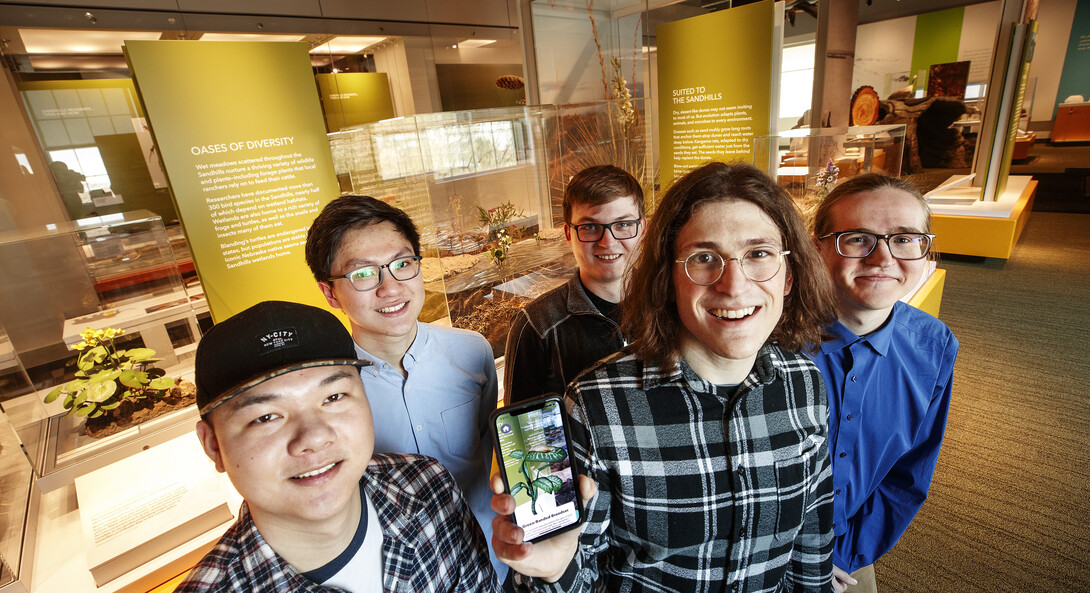
A group of computer science and engineering students are bringing parasites to life — without any of the negative side effects. Their versions of the pesky organisms are contained within augmented reality.
For their senior design project, the Huskers collaborated with the University of Nebraska State Museum at Morrill Hall to create a smartphone app that showcases four parasites in augmented reality, in which users see virtual images through their smartphone as part of their real-world surroundings.
Using the students’ app, visitors to the museum’s new fourth floor exhibit, “Cherish Nebraska,” can scan a trigger item for a certain parasite. The app recognizes the trigger, and then shows a 3-D rendering of the parasite through the camera’s screen as though it was right in front of the user. The app can also show renderings of the host and the effects of the parasite, as well as interactive games, puzzles and videos. It’s modeled after a similar Smithsonian app, with the intention of targeting the 14- to 18-year-old age demographic of museum visitors.
Matthew Martin, one of the students involved on the project, never expected to be doing something like this for his senior design class.
Martin said the creation of the Morrill Hall app was much more experimental than past course projects, and pushed his group to learn new skills, like making 3-D animations.

Not only did the group need to create the entire app, they also needed it to be accurate. Knowing that the museum couldn’t have anything scientifically incorrect or even misleading, the team reached out to museum experts Susan Weller, director; Joel Nielsen, project coordinator; Thomas Labedz, collections manager; and Robert Zink, professor and conservation biologist in the School of Natural Resources, for scientific guidance.
While the end goal of the project is to educate visitors to the museum, the assignment also stretched and educated its developers. The team worked up to 10 hours a week outside of class, and had to meet monthly release schedules that showed their progress.
“I don’t think I’ve ever had a class that has demanded this big of a time commitment,” Martin said.
The team, which consists of Martin, Brandon Huettner, Shaun Ban, Sasha Tenhumberg and Ziyuan Ye, is currently finishing up their fourth parasite for the app, and they hope to wrap it up before the end of the semester. Depending on sponsor funding, the project may continue next year with another senior design group taking the reins.







